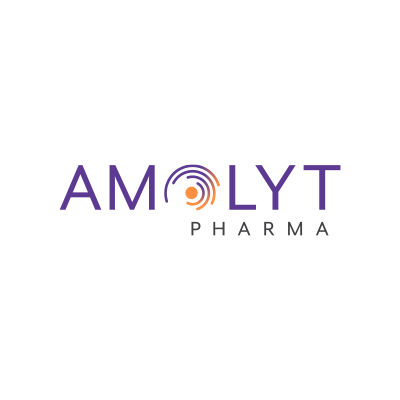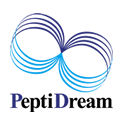预约演示
更新于:2025-05-07

Amolyt Pharma SAS
更新于:2025-05-07
概览
标签
内分泌与代谢疾病
神经系统疾病
皮肤和肌肉骨骼疾病
合成多肽
重组多肽
单克隆抗体
疾病领域得分
一眼洞穿机构专注的疾病领域
暂无数据
技术平台
公司药物应用最多的技术
暂无数据
靶点
公司最常开发的靶点
暂无数据
| 排名前五的药物类型 | 数量 |
|---|---|
| 合成多肽 | 2 |
| 重组多肽 | 1 |
| 单克隆抗体 | 1 |
| 排名前五的靶点 | 数量 |
|---|---|
| PTH1R(甲状旁腺激素受体) | 2 |
| GHR(生长激素受体) | 1 |
| IGFBP2(胰岛素样生长因子结合蛋白-II) | 1 |
关联
5
项与 Amolyt Pharma SAS 相关的药物靶点 |
作用机制 PTH1R激动剂 [+1] |
在研适应症 |
非在研适应症- |
最高研发阶段临床3期 |
首次获批国家/地区- |
首次获批日期- |
靶点 |
作用机制 GHR激动剂 |
原研机构 |
在研适应症 |
非在研适应症- |
最高研发阶段临床1期 |
首次获批国家/地区- |
首次获批日期- |
靶点 |
作用机制 IGFBP2 modulators |
在研适应症 |
非在研适应症 |
最高研发阶段临床前 |
首次获批国家/地区- |
首次获批日期- |
3
项与 Amolyt Pharma SAS 相关的临床试验NCT05778071
A Phase 3 Multicenter, Randomized, Placebo-controlled, Double-blind Study to Evaluate the Efficacy and Safety of Eneboparatide (AZP-3601), a Parathyroid Hormone Receptor Agonist, in Patients With Chronic Hypoparathyroidism (CALYPSO)
This study is investigating the safety and efficacy of eneboparatide (AZP-3601) in patients with chronic hypoparathyroidism (cHP).
During the first 24 weeks of the trial, participants will be randomized to receive eneboparatide or placebo. Study treatment is blinded: patients and doctors will not know which group each patient has been randomized to. All patients will start with a fixed dose of study treatment (eneboparatide or placebo), administered subcutaneously with a pre-filled pen. Study treatment will be individually titrated.
After completion of the first 24 weeks, patients will be treated in the open label extension part of the study for 132 weeks. During this phase, all patients (including patients that were in the placebo group) will receive eneboparatide.
During the first 24 weeks of the trial, participants will be randomized to receive eneboparatide or placebo. Study treatment is blinded: patients and doctors will not know which group each patient has been randomized to. All patients will start with a fixed dose of study treatment (eneboparatide or placebo), administered subcutaneously with a pre-filled pen. Study treatment will be individually titrated.
After completion of the first 24 weeks, patients will be treated in the open label extension part of the study for 132 weeks. During this phase, all patients (including patients that were in the placebo group) will receive eneboparatide.
开始日期2023-06-07 |
申办/合作机构 |
CTIS2023-503734-47-00
- AZP-3813-CLI-001
开始日期2023-05-26 |
申办/合作机构 |
NCT05239221
A Single and Multiple Ascending Dose Study to Investigate the Safety, Tolerability, Pharmacokinetics, and Pharmacodynamics of AZP-3601, a Synthetic Parathyroid Hormone Analog, in Healthy Subjects and in Subjects With Hypoparathyroidism
This study is investigating the safety, tolerability, pharmacodynamics and pharmacokinetics of AZP-3601 following single and repeated administration in both healthy volunteers and patients with chronic hypoparathyroidism (cHP)
The protocol includes 3 parts:
Part A: first-in-human single ascending dose (SAD) study in healthy volunteers
Part B: multiple ascending dose (MAD) study with 2 weeks of treatment in healthy volunteers
Part C: open-label MAD study with a total treatment duration of 3 months in patients with cHP.
The protocol includes 3 parts:
Part A: first-in-human single ascending dose (SAD) study in healthy volunteers
Part B: multiple ascending dose (MAD) study with 2 weeks of treatment in healthy volunteers
Part C: open-label MAD study with a total treatment duration of 3 months in patients with cHP.
开始日期2020-09-07 |
申办/合作机构 |
100 项与 Amolyt Pharma SAS 相关的临床结果
登录后查看更多信息
0 项与 Amolyt Pharma SAS 相关的专利(医药)
登录后查看更多信息
17
项与 Amolyt Pharma SAS 相关的文献(医药)2024-10-05·Journal of the Endocrine Society
8406 A Phase 1 Clinical Study to Evaluate the Safety, Tolerability, Pharmacokinetics and Pharmacodynamics of AZP-3813, a Novel Small Peptide Growth Hormone Receptor Antagonist, in Healthy Subjects
作者: Van der Lely, A J ; Farrell, C ; Allas, S ; Culler, M D ; Fillon, S ; Ravel, G ; Sumeray, M ; Ovize, M ; Taha, O
2024-10-05·Journal of the Endocrine Society
8749 Skeletal effects among pre and postmenopausal women with hypoparathyroidism (HypoPT); data from the Canadian National Hypoparathyroidism Registry (CNHR)
作者: Tagra, Cherry ; Hetal, Juta ; AbuAlrob, Hajar ; Shah, Reema ; Niazi, Humaira ; Morgante, Emmett ; Cheng, Alice ; Aziz Khan, Aliya ; Afifi, Habiba ; Shrayyef, Muhammed ; Sami Khan, Tayyab ; Tauqir, Ibrahim T R ; Reilly Teschke, Susan ; OVIZE, Michel ; Shaikh, Muhammad ; Almoulia, Abdulrahman ; Young, James E M ; Braga, Manoela ; Van Uum, Stan ; Cheung, Rapheal ; Malhem, Jouma ; Mehmood, Shehryar ; Punthakee, Zubin ; Millar, Adam ; Malik, Hadia ; Khan, Sarah ; Hussein, Salma ; Naveed, Faizan ; Chandra, Prakash ; Louise Paul, Terri ; Shaban, Joseph A ; Prebtani, Ally ; Robert, Wilson ; Bole, David ; Ali, Dalal S
2024-10-05·Journal of the Endocrine Society
7145 Enhanced Ability of the Small Peptide GH Receptor Antagonist, AZP-3813, to Decrease IGF1 When Combined with the Somatostatin Analog, Octreotide
作者: Kurasaki, Haruaki ; Berardet, Corentin ; Aouadi, Myriam ; Culler, Michael D ; Reid, Patrick ; Ravel, Guillaume ; Duracher, David ; Datta, Rakesh ; Tomiyama, Tatsuya ; Chalmey, Clémentine
124
项与 Amolyt Pharma SAS 相关的新闻(医药)2025-04-28
Novo Holdings CEO Kasim Kutay asked, \"who’s going to IPO an asset in this environment?\"\n The CEO of Novo Holdings has warned that his $160 billion fund will slow down investment activity until the dust settles after the Trump administration’s tariff blitz.Trump’s attack on global trade—and fast retreat from his initial tariffs—has left investors uncertain about where the economy is heading. That could make life hard for investors such as Novo Holdings. The fund, which is best known as the controlling shareholder of Novo Nordisk, deployed (PDF) 34 billion Danish kroner ($5.2 billion) in life sciences last year. Now, Novo Holdings CEO Kasim Kutay is pumping the brakes.“Until there is more clarity on the prospects for economic growth, we will slow down our investment activities,” Kutay told Bloomberg. “We’re in the midst of uncharted waters.”The shift in Novo Holdings’ approach could have implications for biotechs that are seeking to raise cash. Last year was one of the most active years in the 25-year history of Novo Holdings’ venture investments group, which has pumped money into biotechs including Alentis Therapeutics, Amolyt, Edgewise, Numab and Vaxcyte. Novo Holdings’ venture portfolio was valued at 16 billion Danish krone ($2.4 billion) at the end of 2024. Around two-thirds of the 60 companies in the venture portfolio are private. Novo Holdings had planned to exit some of the assets this year but those actions could now be pushed to 2026.“I mean, who’s going to IPO an asset in this environment? Unless you have to, it’s probably not advisable,” Kutay said. “The view on interest rates, which is a key barometer and a driver of how and when to invest, is all over the place.”Kutay’s comments come shortly after Roche’s CEO Thomas Schinecker said tariffs could make it “more difficult to make financial sense of any M&A deals.” Merck & Co. CEO Rob Davis also said that \"clearly what’s happening does make it more complex to get things done because [of] the uncertainty everyone is wrestling with.”

2025-04-24
Versant Ventures’ biotech incubation team has launched another Swiss startup, this time focused on a pair of antibodies for autoimmune and inflammatory diseases.
Granite Bio broke cover on Thursday morning after raising a $30 million Series A from Versant and Novartis’ venture arm in 2021 and a $70 million Series B from Forbion and Sanofi’s corporate venture team in 2023.
The company has kept a low profile until now, new CEO Patrick Loustau said in an interview. Most recently, he was the chief business officer at Amolyt Pharma and helped orchestrate the hypoparathyroidism biotech’s
$1.05 billion exit to AstraZeneca
last year.
Granite Bio is doing work in one of the most sought-after areas of drug development
:
inflammatory and immunology diseases (I&I).
Large pharmaceutical companies made more than 10 I&I acquisitions last year, according to an
Endpoints News
tally, and investor interest continued in the first quarter, with the category continuing to “chip away at oncology,” Oppenheimer bankers wrote in a note earlier this month. Several pharma companies have also inked licensing and collaboration deals with I&I startups.
While many companies are focused on bispecific antibodies and other modalities for I&I, Granite aims to get close to the root cause of disease by hitting the cellular origin of pro-inflammatory cytokines.
Both of Granite’s programs originated in the labs of University of Regensburg professor Matthias Mack. Versant’s Ridgeline team in Basel carried them forward.
Versant has launched several new biotechs in the past year, including
four obesity drug developers
and a kidney disease company
that’s working with Novartis
. The VC firm was also a founding investor in Santa Ana Bio, another autoimmune biotech that emerged last year
with $168 million
across its Series A and B rounds.
Granite is already testing its lead antibody, dubbed GRT-001, in healthy volunteers. The experimental medicine aims to tamp down on pro-inflammatory monocytes. A Phase 1b trial in ulcerative colitis is slated to begin later this year, according to Loustau.
“The approach is to totally deplete the monocytes,” he said, “and by doing that you basically eradicate all the cytokines that are produced by the monocytes.”
Monocytes, a type of white blood cell, are essential players in the immune system.
“If you look at patients that are resistant to the standard of care, monocytes are a key player in all those patients,” said Rogier Rooswinkel, a Forbion general partner and Granite board member.
The company is currently testing an IV version of GRT-001 but it is also working on an under-the-skin option that will likely be taken into Phase 2, Loustau said. Beyond UC, the company is considering the experimental medicine’s potential in Crohn’s disease, rheumatoid arthritis, fibrotic diseases, MASH and other areas. They could eventually test once-monthly dosing regimens, too.
Meanwhile, the startup’s researchers are also developing an interleukin-3-blocking antibody called GRT-002. Granite believes the candidate will treat itch and allergy. Human studies of the asset are set to begin next year to test out that hypothesis.
临床1期引进/卖出临床2期
2025-04-03
·药明康德
▎药明康德内容团队编辑近日,行业媒体Endpoints News发布了2024全球生物医药企业研发投入TOP 15榜单,药明康德内容团队将结合公开资料为读者解析上榜企业在2024年扩展研发管线的战略布局,旨在通过这些企业的创新动向展现整个产业的发展趋势。点击文末“阅读原文/read more”,即可访问原始榜单页面。▲2024年研发投入最多TOP 15生物医药公司(图片来源:药明康德内容团队根据参考资料[1]制表)默沙东2024年,默沙东通过“收购+合作”双轨策略,在多个治疗领域实现深度布局:年初,公司以6.8亿美元收购Harpoon Therapeutics,斩获DLL3靶向T细胞接合器HPN328;5月,斥资30亿美元收购EyeBio,囊获四价三特异性抗体Restoret;12月又拿下翰森制药的HS-10535全球权益,进一步拓展小分子药物管线,并成功进军GLP-1领域。与此同时,默沙东加速布局前沿技术:公司与Pearl Bio达成10亿美元合作,开发含非标准氨基酸的生物制品疗法;引入Variational AI的生成式AI平台优化药物发现,并与礼新医药就PD-1/VEGF双抗达成最高27亿美元里程碑合作。不久前,默沙东还与恒瑞医药就小分子心血管新药Lp(a)抑制剂达成授权合作。这一系列举措不仅加深了默沙东在实体瘤领域的研发能力,还通过新兴技术平台主动构建未来增长引擎。罗氏罗氏正加速推进其核心研发管线,聚焦肿瘤、神经退行性疾病及呼吸系统疾病等领域。在神经退行性疾病领域,罗氏近期公布了其靶向淀粉样蛋白的单抗药物trontinemab用于治疗轻度至中度阿尔茨海默病(AD)患者的1b/2a期试验积极结果。另一款药物prasinezumab也有望于年内获得支持进入3期临床的关键数据。在慢性阻塞性肺病(COPD)领域,罗氏旗下IL-33抑制剂astegolimab的两项临床试验数据预计将于今年揭晓。在RNA治疗领域,罗氏与Alnylam合作开发的zilebesiran在治疗高血压患者的2期临床试验中展示了显著疗效。免疫学管线方面,其BTK抑制剂fenebrutinib在针对多发性硬化的2期试验中表现良好,有望在今年获得关键数据;IL-6抗体vamikibart针对葡萄膜炎性黄斑水肿的3期研究也将公布结果。从战略布局来看,罗氏通过选择性并购与全球合作进一步夯实其研发管线。公司斥资超30亿美元收购Carmot Therapeutics,以强化其在代谢疾病领域的布局;以超10亿美元收购Poseida Therapeutics以获得其现货型CAR-T技术;此外,罗氏还以近8000万美元预付款与信达生物达成合作,共同开发小细胞肺癌疗法。与此同时,罗氏与Oxford BioTherapeutics达成多年合作,聚焦抗体疗法开发,延续其在肿瘤免疫领域的深度布局。阿斯利康阿斯利康持续加码研发创新,研发投入从2019年的60亿美元跃升至2024年的逾130亿美元,驱动其从肿瘤领域向其他疾病领域加速扩张。在肿瘤管线,口服选择性雌激素受体降解剂(SERD)camizestrant的3期临床积极数据,加深了该疗法在乳腺癌治疗领域的重要性;在心血管疾病领域,阿斯利康通过收购CinCor Pharma获得新型醛固酮合成酶抑制剂baxdrostat,该药物在2期临床试验可显著降低难治性高血压患者的血压水平,为临床治疗难治性高血压提供了潜在新选择。战略布局层面,阿斯利康动作频出:与Allorion Therapeutics达成独家选择权和全球许可协议,共同开发EGFR L858R突变靶向变构抑制剂,瞄准晚期EGFR突变非小细胞肺癌(NSCLC)治疗缺口;斥资10.5亿美元收购Amolyt Pharma,获得处于3期临床阶段的甲状旁腺功能减退症创新多肽疗法eneboparatide(AZP-3601);更斥资20亿美元收购Fusion Pharmaceuticals,整合其放射偶联药物(RDC)平台及FPI-2265等管线,强化肿瘤精准治疗布局。强生强生近期在免疫学领域取得关键研究进展:从Protagonist Therapeutics引进的口服IL-23受体拮抗剂icotrokinra针对斑块状银屑病的3期临床试验达到主要终点。在管线推进方面,靶向新生儿Fc受体的抗体疗法nipocalimab迎来多项进展。该疗法针对全身性重症肌无力(gMG)适应症已向FDA递交生物制品许可申请(BLA)并获得优先审评资格,同时向EMA同步提交上市许可申请(MAA),有望成为重磅疗法。战略布局方面,强生斥资146亿美元收购Intra-Cellular Therapies,斩获每日一次口服精神疾病治疗药物Caplyta(ITI-007)和ITI-1284,同步整合其临床阶段研发管线。艾伯维2024年,艾伯维专注多元化管线的拓展。在核心产品方面,免疫领域药物Skyrizi获批溃疡性结肠炎适应症;肿瘤领域亦取得重要突破,其抗体偶联药物(ADC)Elahere获FDA完全批准;神经科学领域则推出创新产品Vyalev,该疗法为首款获FDA批准的基于左旋多巴的皮下24小时持续输注帕金森病疗法。为补充研发管线,艾伯维开展了一系列战略收购,包括以2亿美元收购Nimble获得口服肽类IL-23R抑制剂,纳入Celsius的TREM1抗体和Landos Biopharma的口服NLRX1激动剂强化炎症性肠病治疗领域,以及收购Aliada布局阿尔茨海默病临床阶段疗法ALIA-1758。在创新合作方面,艾伯维同样成果丰硕:与EvolveImmune Therapeutics达成15亿美元合作开发多特异性抗肿瘤疗法,联合Umoja Biopharma推进原位CAR-T细胞疗法研发,携手Gilgamesh Pharmaceuticals合作开发针对精神疾病的下一代疗法,与Parvus Therapeutics共同开发炎症性肠病的新疗法,以及与OSE Immunotherapeutics和Tentarix Biotherapeutics建立合作共同推进肿瘤学和免疫学等领域的新药研发。通过一系列收购和合作,艾伯维不仅加强其在免疫学和肿瘤学领域的布局,还在神经科学领域取得了重要进展。百时美施贵宝百时美施贵宝持续加大研发投入以巩固创新优势,2024年研发投入再攀新高,公司通过战略性并购与合作增强其管线建设。在神经精神疾病领域,百时美施贵宝斥资140亿美元收购Karuna Therapeutics获得突破性药物Cobenfy(KarXT),该药已获FDA批准治疗成人精神分裂症,成为近数十年来FDA批准的首个基于新机制的精神分裂症药。此外,该药物用于治疗阿尔茨海默病患者精神病发作的潜力。也引发了高度关注。在合作方面,百时美施贵宝不断迭代其管线:公司与BioArctic达成合作,共同开发靶向PyroGlu-Aβ的阿尔茨海默病抗体疗法BAN1503和BAN2803;携手Prime Medicine开发下一代T细胞疗法;与VantAI合作部署分子胶技术平台。通过这些举措,百时美施贵宝在多个关键领域实现了战略布局,并进一步增强了其创新能力。礼来2024年,礼来公司持续在减重和阿尔茨海默病治疗领域发力。在肥胖症治疗领域,其口服GLP-1受体激动剂orforglipron在2期临床试验中展现出显著的减重效果,其3期试验正在推进;同时,公司布局的多靶点GLP-1/GIP/GCG激动剂retatrutide在2期研究中使肥胖或超重成人患者在经过24周的治疗后,达成至少15%的体重下降。在神经退行性疾病管线中,靶向β淀粉样蛋白的remternetug(每季度一次注射)也已进入关键临床阶段。在心血管和肿瘤领域,礼来也在同步发力:降血脂药物lepodisiran与muvalaplin正在加速临床开发;KRAS抑制剂olomorasib展现出显著的潜力。战略布局层面,礼来通过多重手段扩展创新边界,包括以32亿美元收购Morphic Holding,获得炎症性肠病口服整合素靶向疗法MORF-057,进一步强化自身免疫学管线;与KeyBioscience合作开发胰淀素/降钙素双重激动剂;携手HAYA Therapeutics利用RNA引导基因调控平台推进代谢疾病的临床前药物研发;并与Isomorphic Labs达成合作,借助AlphaFold技术加速小分子药物发现。通过持续的研发投入与精准并购,礼来成功构建了一个覆盖代谢、神经、心血管及肿瘤领域的创新生态。辉瑞2024年,辉瑞公司通过创新疗法研发和战略合作持续强化其研发管线布局。在肿瘤领域,高选择性CDK4抑制剂atirmociclib展现突出潜力,在针对经多线治疗的乳腺癌患者的1期临床试验中,atirmociclib组合疗法实现32%的客观缓解率(ORR),显著优于现有疗法(ORR<10%)且安全性良好。在代谢疾病领域,辉瑞重点推进口服小分子GLP-1受体激动剂danuglipron用于肥胖治疗的临床开发。疫苗领域也取得了重要突破,Abrysvo获FDA批准扩展适应症,用于预防18至59岁高风险个体因呼吸道合胞病毒(RSV)引起的下呼吸道疾病。辉瑞同时积极开展外部合作:与Quotient Therapeutics合作探索心血管和肾脏疾病的新疗法;通过旗下Ignite平台与Acepodia公司合作开发自身免疫疾病疗法;与Flagship Pioneering旗下两家公司Ampersand Biomedicines和Montai Therapeutics就肥胖症和非小细胞肺癌治疗开展靶向分子研发合作。诺华2024年,诺华继续推动包括Fabhalta、Leqvio和Scemblix等核心产品的商业化进程。在后期管线中,脊髓性肌萎缩(SMA)疗法OAV101有望扩大患者覆盖范围,而从PTC Therapeutics引进的亨廷顿病治疗药物votoplam(PTC518)也展现出重大潜力。此外,诺华通过一系列战略性收购与合作加速创新:以11亿美元收购Kate Therapeutics强化其在神经科学和基因治疗领域布局;30亿美元收购MorphoSys增强肿瘤及血液学领域管线;与Ratio Therapeutics合作开发放射性治疗药物;与Arvinas达成超10亿美元协议获得其PROTAC降解剂项目;12亿美元携手Voyager Therapeutics推进亨廷顿病和SMA基因疗法研发。这一系列举措展现了诺华在肿瘤、神经科学和罕见病等关键治疗领域的深度布局,为其长期发展奠定坚实基础。GSK2024年,GSK通过核心产品创新和战略收购持续强化其产业布局。在疫苗领域,GSK公布其带状疱疹疫苗Shingrix的十年保护效力积极数据。在呼吸系统疾病方面,一年两次给药的IL-5单抗depemokimab在3期临床研究中取得积极进展,并已向美国FDA提交生物制品许可申请。在抗感染领域,创新抗生素Blujepa(gepotidacin)获批上市。与此同时,GSK也正通过一系列战略性布局加速管线拓展:公司斥资14亿美元收购Aiolos Bio获得长效抗胸腺基质淋巴细胞生成素(TSLP)单抗AIO-001;以8.5亿美元收购恩沐生物(Chimagen Biosciences)的双靶点T细胞接合器CMG1A46,并与Muna Therapeutics、Vesalius Therapeutics等公司合作开发神经退行性疾病创新疗法。此外,GSK还获得了映恩生物(Duality Biologics)ADC药物DB-1324的全球权益(除大中华区),进一步丰富了其在肿瘤领域的产品组合。赛诺菲2024年,赛诺菲持续加大研发投入,并在管线推进方面取得显著进展。在呼吸疾病领域,IL-33单抗Itepekimab针对COPD的适应症已进入3期临床开发阶段,数据预计于下半年公布;同时,针对哮喘的双抗疗法lunsekimig已推进至2期临床阶段。在血液肿瘤管线中,BTK抑制剂tolebrutinib获得FDA优先审评资格,PDUFA日期定于2025年9月28日。此外,公司管线中的其他项目也在积极推进,包括蛋白降解药物KT-474和口服BTK抑制剂rilzabrutinib。与此同时,赛诺菲深化战略合作以布局未来增长点。公司与Orano Med达成3亿欧元股权投资及3.2亿欧元独家许可协议,联合开发下一代放射性配体药物,开辟肿瘤精准治疗新路径;并与Synthekine合作优化IL-10受体激动剂,旨在满足炎症性疾病的未满足需求。此外,赛诺菲还以17亿美元收购Inhibrx Biosciences,获得α-1抗胰蛋白酶缺乏症(AATD)候选药物INBRX-101。诺和诺德2024年,诺和诺德聚焦三大核心治疗领域:糖尿病/肥胖症/代谢功能障碍相关脂肪性肝炎(MASH)、心血管/慢性肾病以及罕见病。其重点产品CagriSema(cagrilintide/司美格鲁肽复方制剂)在3期临床试验中展现出积极疗效,治疗68周可实现22.7%的显著减重效果。为拓展创新管线,诺和诺德开展了一系列战略布局:斥资10.25亿欧元收购Cardior公司,获得其处于2期临床阶段的心力衰竭反义寡核苷酸疗法CDR132L;与Ascendis Pharma合作开发每月一次给药的GLP-1受体激动剂;同时与EraCal、Metaphore、Omega Therapeutics和Cellarity公司等多家企业达成合作协议,共同开发新一代减重疗法和MASH治疗药物。安进2024年,安进公司聚焦核心创新药物布局,重点推进代谢疾病和心血管领域突破性疗法。其注射型肥胖症药物MariTide在2期临床试验中展现出显著疗效,治疗52周实现约20%的平均体重减轻,并显著改善心血管代谢指标,目前已进入关键后期试验阶段。在心血管领域,siRNA疗法olpasiran在2期试验中表现优异,可使98%患有动脉粥样硬化性心血管疾病(ASCVD)患者的载脂蛋白(a)水平降至标准值以下,目前正在ASCVD患者中开展3期临床试验,预计2026年公布结果。安进同时积极推进其他重点产品:CD19抗体Uplizna今日获FDA批准,用于治疗免疫球蛋白G4相关疾病(IgG4-RD)成人患者;治疗特应性皮炎的rocatinlimab则在3期试验中达成所有主要和次要终点,展现出显著的临床改善效果。吉利德科学2024年,吉利德科学通过创新疗法突破和战略合作持续推动多元化发展。其在肿瘤治疗领域取得重要进展,与Arcellx合作开发的BCMA靶向CAR-T疗法anito-cel在治疗复发/难治性多发性骨髓瘤(RRMM)的2期临床试验中表现优异:总缓解率高达97%,12个月总生存率达到96.5%,且安全性良好,未出现迟发性神经毒性。同时,公司以43亿美元收购CymaBay获得了原发性胆汁性胆管炎(PBC)治疗seladelpar,显著增强了自身肝脏疾病产品管线,该药物已在2024年8月被FDA批准。此外,吉利德还通过多项战略合作加速创新布局:与Tubulis、Xilio Therapeutics及Merus达成总额超49亿美元的合作协议,重点开发ADC、肿瘤激活IL-12蛋白及三特异性抗体等前沿疗法;追加3.2亿美元投资Arcus Biosciences以推进联合开发项目。这些举措加强了吉利德在肿瘤学和肝脏疾病等新治疗领域的战略布局与创新实力。再生元2024年,再生元公司聚焦肿瘤、免疫和基因治疗三大领域,构建了丰富的创新药物管线。在肿瘤领域,抗LAG-3单抗fianlimab联合PD-1疗法展现出显著疗效,在非小细胞肺癌和黑色素瘤患者中达到近60%的客观缓解率;双特异性抗体linvoseltamab已向FDA和EMA提交上市申请,用于治疗多发性骨髓瘤。此外,与Intellia合作的CRISPR基因编辑疗法NTLA-2001在治疗转甲状腺素蛋白淀粉样变性(ATTR)的1期临床试验中取得积极结果。在代谢疾病和呼吸系统疾病领域,抗GDF8单抗trevogrumab和抗IL-33单抗itepekimab等创新疗法正处于后期临床开发阶段,展现了公司在多元化治疗领域的研发实力。除了研发进展,再生元在过去的一年还达成了多项合作与交易:与Mammoth Biosciences达成1亿美元协议开发体内CRISPR基因编辑疗法;通过收购2seventy bio的细胞疗法管线成立Regeneron Cell Medicines,探索细胞疗法与抗体药物的联合应用。▲欲了解更多前沿技术在生物医药产业中的应用,请长按扫描上方二维码,即可访问“药明直播间”,观看相关话题的直播讨论与精彩回放参考资料:[1] Big ambitions at Merck and AstraZeneca — along with a few giant pitfalls — reshape top ranks of the R&D 15. Retrieved April 3, 2025 from https://endpts.com/big-ambitions-at-merck-and-astrazeneca-along-with-a-few-giant-pitfalls-reshape-top-ranks-of-the-rd-15/[2] 各公司官网免责声明:药明康德内容团队专注介绍全球生物医药健康研究进展。本文仅作信息交流之目的,文中观点不代表药明康德立场,亦不代表药明康德支持或反对文中观点。本文也不是治疗方案推荐。如需获得治疗方案指导,请前往正规医院就诊。版权说明:本文来自药明康德内容团队,欢迎个人转发至朋友圈,谢绝媒体或机构未经授权以任何形式转载至其他平台。转载授权请在「药明康德」微信公众号回复“转载”,获取转载须知。分享,点赞,在看,聚焦全球生物医药健康创新
并购临床3期临床2期免疫疗法
100 项与 Amolyt Pharma SAS 相关的药物交易
登录后查看更多信息
100 项与 Amolyt Pharma SAS 相关的转化医学
登录后查看更多信息
组织架构
使用我们的机构树数据加速您的研究。
登录
或

管线布局
2026年01月02日管线快照
管线布局中药物为当前组织机构及其子机构作为药物机构进行统计,早期临床1期并入临床1期,临床1/2期并入临床2期,临床2/3期并入临床3期
临床前
2
1
临床1期
临床3期
1
1
其他
登录后查看更多信息
当前项目
| 药物(靶点) | 适应症 | 全球最高研发状态 |
|---|---|---|
Eneboparatide ( PTH1R ) | 甲状旁腺功能减退症 更多 | 临床3期 |
AZP-3813 ( GHR ) | 肢端肥大症 更多 | 临床1期 |
AZP-3404 ( IGFBP2 ) | 肥胖 更多 | 临床前 |
AZP-40XX ( PTH1R ) | 原发性甲状旁腺功能亢进症 更多 | 临床前 |
Bone disease peptide therapeutics (Alize Pharma III SAS) ( IGFBP2 ) | 绝经期后骨质疏松 更多 | 终止 |
登录后查看更多信息
药物交易
使用我们的药物交易数据加速您的研究。
登录
或

转化医学
使用我们的转化医学数据加速您的研究。
登录
或

营收
使用 Synapse 探索超过 36 万个组织的财务状况。
登录
或

科研基金(NIH)
访问超过 200 万项资助和基金信息,以提升您的研究之旅。
登录
或

投资
深入了解从初创企业到成熟企业的最新公司投资动态。
登录
或

融资
发掘融资趋势以验证和推进您的投资机会。
登录
或

生物医药百科问答
全新生物医药AI Agent 覆盖科研全链路,让突破性发现快人一步
立即开始免费试用!
智慧芽新药情报库是智慧芽专为生命科学人士构建的基于AI的创新药情报平台,助您全方位提升您的研发与决策效率。
立即开始数据试用!
智慧芽新药库数据也通过智慧芽数据服务平台,以API或者数据包形式对外开放,助您更加充分利用智慧芽新药情报信息。
生物序列数据库
生物药研发创新
免费使用
化学结构数据库
小分子化药研发创新
免费使用


